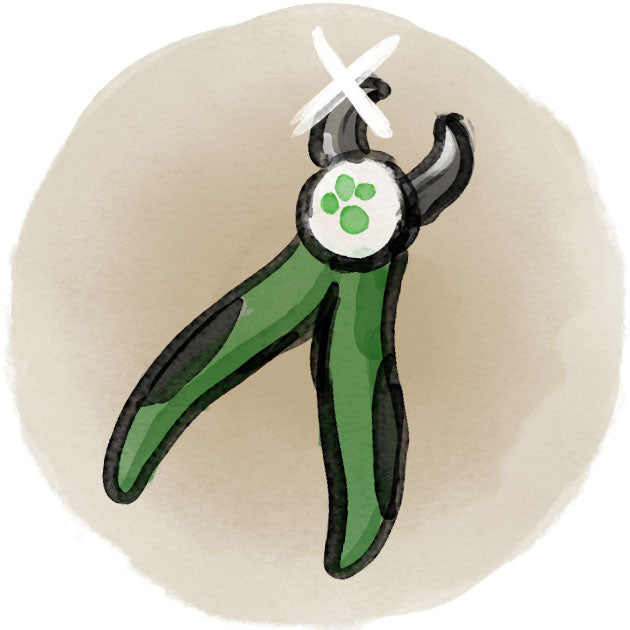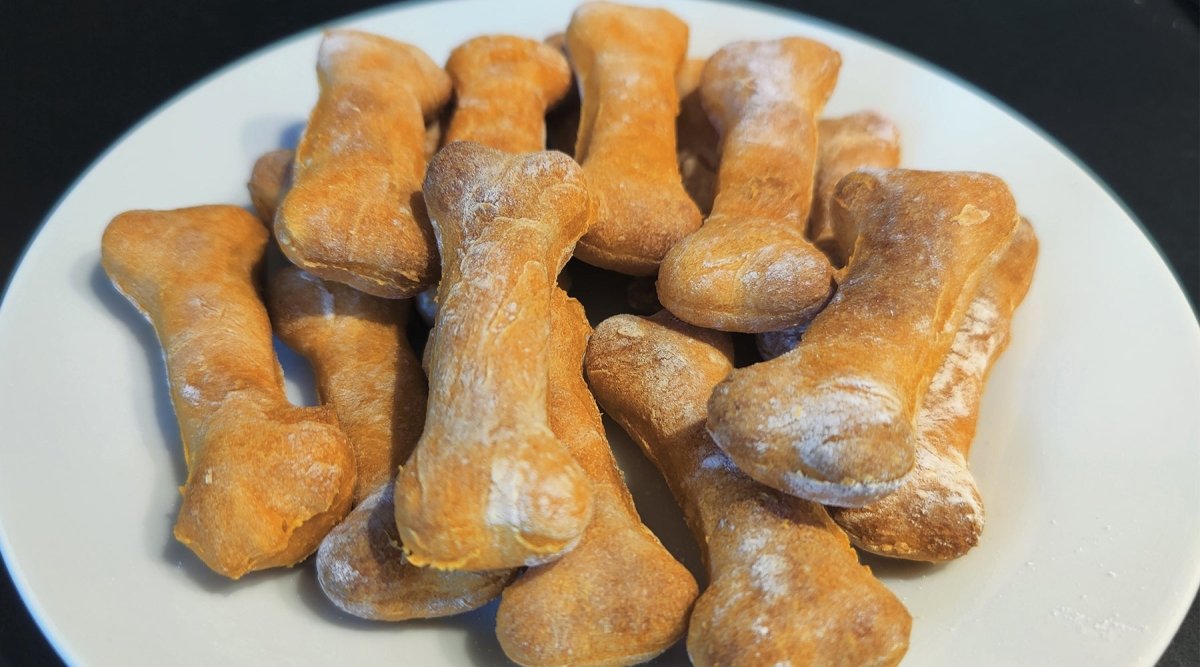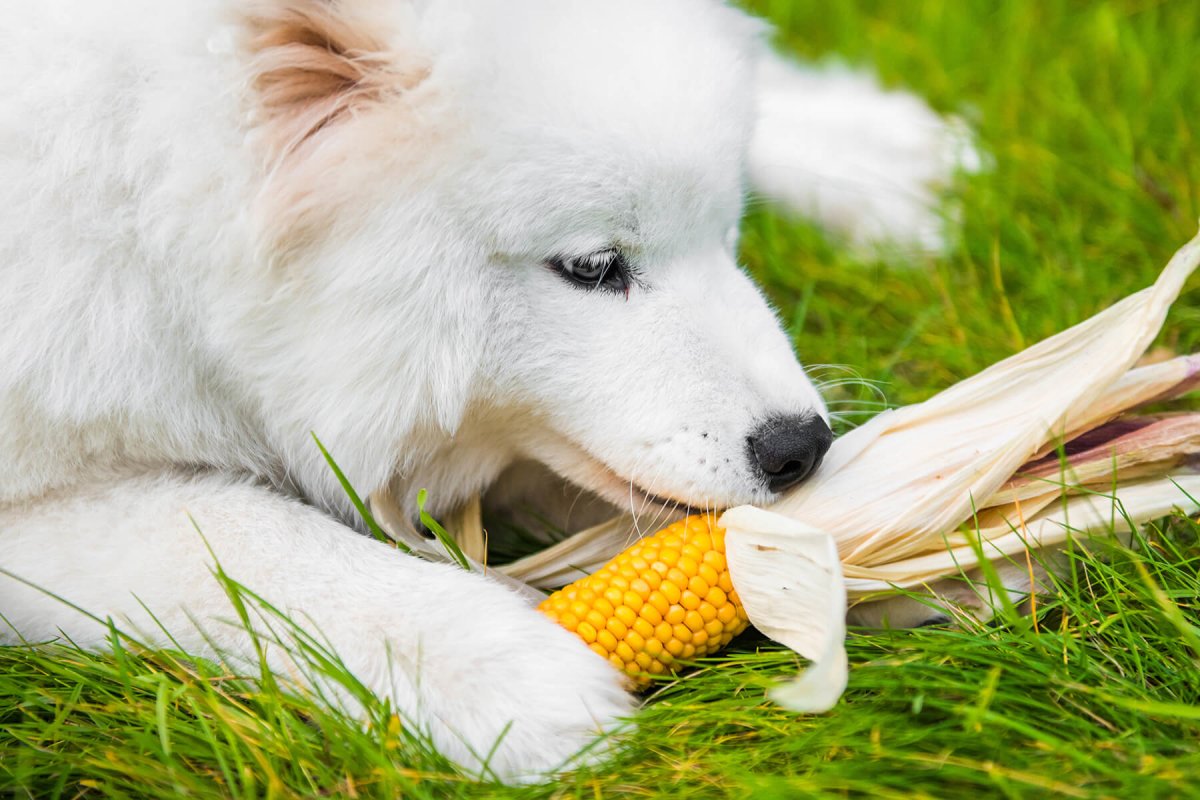Even dogs need a pedicure from time to time, although most four-legged friends probably don't enjoy it as much. Trimming your dog's nails is more than just cosmetic: nails that are too long affect the dog's posture and can cause damage to the joints in the long term. In this article, we show you what to look out for when grooming your dog's paws and give you step-by-step instructions on how to trim your dog's claws. We'll also tell you how to cut black claws on dogs.
Why do you need to trim your dog's nails?
Cutting your dog's claws is not primarily for appearance, but is important for your dog's health. This is because claws that are too long hinder the dog's natural gait and can cause additional pain to the four-legged friend. To avoid the pain and relieve the joints, the dog intuitively changes its weight-bearing and posture. This can lead to misalignment of the joints and affect the entire musculoskeletal system. In the long term, the misalignment leads to postural and gait problems, which in turn cause walking difficulties, lameness and injuries.
If the dog's nails are not trimmed in time, the claw and life continue to grow. Some claws can even grow into the pads of the paws if left uncut, which can be particularly painful for your dog. The life in the claw can gradually recede in the dog. Cutting nails promotes regression.
When are dog claws too long?
The best way to tell when your dog's claws are too long is to listen for clicking noises when walking over laminate, tiles and the like. You can also stand your dog in front of you so that his paws are on the floor. If the dog's nails touch the floor, it's time to trim them. If, on the other hand, the claws hover just above the ground and a sheet of paper fits between the floor and the nails, then your four-legged friend has the optimum length.

Since cutting dog claws is not always a smooth process and your four-legged friend may put up a fight, you should get your young dog used to this procedure early on. You can regularly touch and examine your pet's paws and inspect the individual paw pads. This way, your four-legged friend will get used to you touching their paws and trimming their fur at an early age and build up trust in this situation. With a lot of sensitivity and our step-by-step instructions, you will soon be able to cut your dog's nails without him putting up a fight.
Instructions for trimming your dog's nails
You will need the following accessories for proper dog paw care:
2. rounded scissors to remove the fur between the paw pads

3. a (cell phone) flashlight

Trimming your dog's claws - simple and straightforward
- Your dog should be sitting or lying down in a relaxed position; if he struggles too much and is restless, you can ask another person to help.
- Take a close look at your dog's paws, if there is dirt between the paw pads, the dog's paws must be cleaned before the claws are trimmed.
- If your dog has protruding fur on the paw pads, you should trim it with rounded scissors. (see video)
- Now wrap your hand around the paw so that you can hold it firmly. Be careful not to exert too much pressure and not to hurt your four-legged friend. Now take a look at the claws: If your dog has light-colored claws, you can easily see where the life in the claw extends to. You can cut black claws on dogs with the help of a flashlight (a cell phone flashlight is perfectly adequate). Simply illuminate the claw and mark with a pen where the life ends.
- Now hold the claw scissors as shown in the illustration and clip the claw at a distance of 1-2 mm from your mark.
File the dog's claws: If the life has grown too far into the claw, you should first file the claw off with a special dog file. This can be a little tedious and take time until the life in the claw recedes. - Don't forget to reward your pet afterwards. He will then associate the tedious procedure with something positive and will be at least as relaxed the next time.
You can also apply a paw balm for dogs to your pet's paws. This will keep them nice and supple and prevent cracked paws.

Caution: Be careful not to cut into the skin, as this can lead to bleeding and cause your dog pain. It can also reduce your dog's confidence and next time he won't be so open to having his nails cut. If something does go wrong, you can press your dog's claw against a bar of curd soap to stop the bleeding. If there is a lot of bleeding and you cannot stop the blood flow, you should consult a vet.
Understandably, many people are initially inhibited when it comes to clipping their dog's nails. Practice makes perfect - follow the step-by-step instructions and nothing can go wrong. Trimming your dog's black nails will also soon become routine. Regular dog grooming therefore also includes nail trimming. Dogs don't always like having their nails trimmed, so it's easier if someone can hold your dog.
How often do you have to cut your dog's nails?
How often a dog's nails need to be trimmed depends on the individual. In some dogs, the claws grow back faster, in others the length does not change for months. Weight, size and of course the condition of the ground also play an important role. If your dog runs over asphalt more often, the claws will automatically grind down. This is of course much more relaxing for you and your dog. We therefore recommend running over asphalt from time to time.
Conclusion
Paw care and claw trimming are part of your dog's regular grooming routine. If your dog's claws are not trimmed when they are too long, this can lead to poor posture and subsequent damage. With our step-by-step guide, you can cut your dog's nails without pain.





